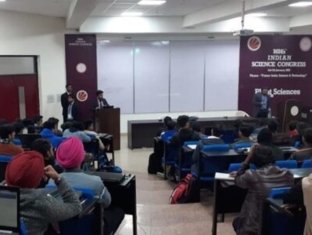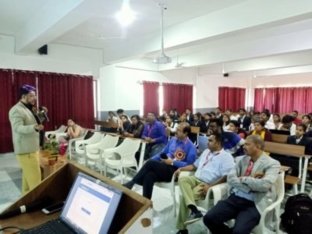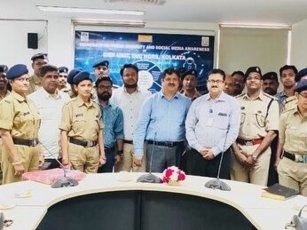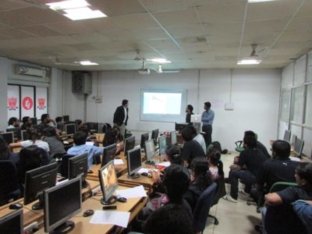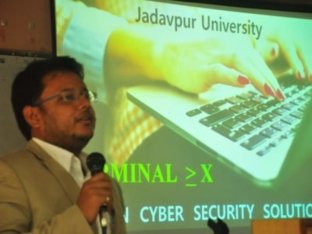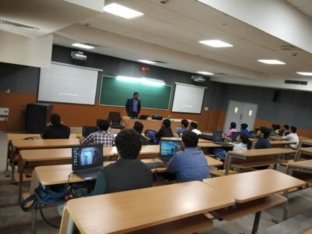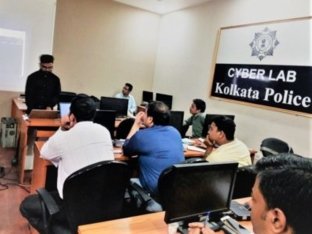New Session starts on 3rd October, 2021. 8:30 PM - 10:30 PM Batch. Reserve your seat by Calling us Now.
Online CCNA Training in Kolkata by Indian Cyber Security Solutions | Learn from Industry Expert

The Online CCNA Training in Kolkata is an associate level course certification provided by Cisco Systems in the stream of Information technology. To qualify for the Certification one should have Excellent Knowledge about Networking. As many of the companies are migrating towards controller-based architectures. The Online CCNA Course in Kolkata is in high demand for further skills and vital knowledge as well as for core network engineer increases it is just to organize for this network transition.
The Online CCNA Certification Training in Kolkata won't only prepare you with the knowledge of foundational technologies but confirm you to stay relevant with the skill sets needed for the adoption of next-generation technologies.
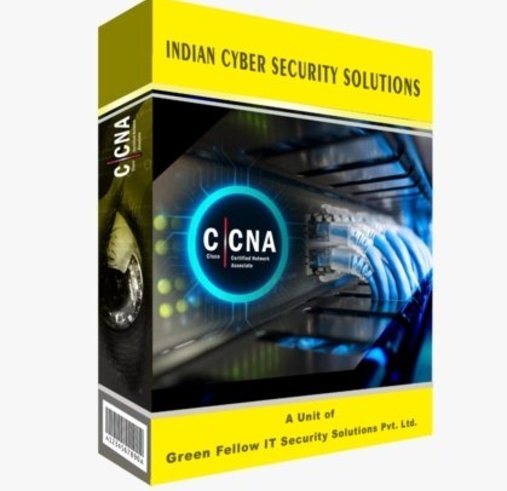
The Beauty of learning this course is this is the certification where there are no pre-requests to learn the course, by that way one can start their career in Network Engineering, Network Security or even Cyber Security. One can Mold their career to technical Field and grow up in this Fields.
So, as you are passionate and you may be from any background during graduation you can grow your career through ethical hacking and can apply for Security jobs like Cyber analyst. Information Security Analyst, Ethical Hacker, Security Consultant, (Computing / Networking / Information Technology) , Information Security Manager, Penetration Tester.
Indian Cyber Security Solutions Provides Online CCNA Networking in Kolkata where the course modules are designed by the professional faculties and their teaching levels are 100% up to the extent, to crack the Certification. After this course, one could have a number of opportunities to apply as a network engineer, core networking engineer, etc... On the other side of the course one can also learn the Cyber Security, Ethical Hacking, Bug hunting and many courses through networking skills without any programming knowledge.

Indian Cyber Security Solutions is awarded the 2nd position as the
" 10 Most Promising Cyber Security Training Institute in India 2020 "
CCNA focuses on building a strong foundation for professionals looking to start a career in the world of IT Networking. The latest CCNA exam: CCNA 200-301 received a major update in the syllabus
As a CCNA Fresher, your entry level job would as a Network Support Engineer, and the job salary would be INR 5,00,000 (per annum)
Originally Answered: Is CCNA exam tough? It takes about about 1 month of self study if you have opted for CCNA course otherwise it takes 2–2.5 months to get prepare for the CCNA. It is definitely not a difficult test, but for those new to networking, there are a lot of new concepts and a lot of things to grasp.
In India. However even if you want to prepare for any Cisco certification like CCNA Security or CCNP R&S or CCNP Security, you will anyhow have to prepare for CCNA R&S first. CCNA is a better career option for Btech/BCA/MCA students, as they get lot of learning and have a clear path of up-gradation.
The validity of CCNA Certification is 3 years. Renewal requires certification holders to register for and pass same or higher level Cisco re certification exam(s) every 3 years.
Indian Cyber Security Solutions have 130+ trainers who are professional Ethical Hackers and Networking Professionals working in different MNCs like Infosys, Cognizant, Wipro, ATOS, Intel and are also members of our research & development team. All the trainers are geographically located in different areas provide online training on CCNA. All the CCNA training classes are held through an application where the faculty and the students are LIVE interacting with each other over the internet. All the classes are recorded and uploaded in our online portal “ HACKERS LAB “ where all students have lifetime access. We guarantee your satisfaction or we pay back your course fee. There will be 3 instructors dedicated to individual batch which will carry on for 3 months.
Eligibility Criteria to become a Professional CCNA Network Engineer
Students and working professionals who are interested to get into cyber security domain or have interest in networking can apply for this course. B.tech / BCA / MCA students who are looking for summer training and winter training can also opt for this course. It is highly recommended for students who want to develop their career as an Network Penetration Tester should go for this course.
Any student with minimum knowledge in computers can apply for this course. Our CCNA training starts from the basics of networking and then goes deep into the CISCO modules.
Learn from Industry Experts & Get Real Hands-On Experience and get job ready

Get Started with FREE Demo Class:
* We don’t share your personal info with anyone. Check out our Privacy Policy for more info.
Why You Should Choose ICSS ?
Industry professions from Amazon, Cognizant & Intel will share their practical experience in the class
100% practical and lab-based classes (available online & offline)
25% Scholarship program for merited students with a minimum of 95% marks and above in their 12th board exams
LIFETIME access to video tutorials, case studies
EMI option is available if you go for 2 or more courses.
Get educational loan @ O% interest
TRAINING METHODOLOGY of ICSS
With our full Training Methodology you will get job

JOB ORIENTED CCNA COURSE DETAILS
100% Job Placement Assistance
- Career Guide: Job Opportunities will be shared with you
- Be JOB Ready Resume prepared by Experts
- Questions & Answers provided for interviews
- Mock Exams you will write to test your skills
- Mock Interviews to boost your confidence
- Pre-Requisite: Person with Cyber Security Knowledge can learn CCNA and Get Job
- Projects: Work on Real Life Case Studies
Course Duration
We Provide:
- 40 Hours Classes
- Fast Track Classes
- Weekdays & Weekend Classes
- In Class, You Get In-Depth CCNA Knowledge on each Topic
- Projects to do assignments
- Location: Courses are run across training centers in India (Salt Lake, Sector 5) & Bangalore (Indiranagar)
- Corporate Training for your Employees
- Online CCNA Courses - Live Instructor LED Classes
- Pay only after attending FREE DEMO CLASS
CCNA Certification - Course Module
1.1 About The PWK Course
1.1.1 PWK Course Materials
1.1.2 Access to the Internal VPN Lab Network
1.1.3 The Offensive Security Student Forum
1.1.4 Live Support
1.1.5 CCNA Exam Attempt
1.2 Overall Strategies for Approaching the Course
1.2.1 Welcome and Course Information Emails
1.2.2 Course Materials
1.2.3 Course Exercises
1.2.4 PWK Labs
1.3 Obtaining Support
1.4 About Penetration Testing
1.5 Legal
1.6 The MegaCorpone.com and Sandbox.local Domains
1.7 About the PWK VPN Labs
1.7.1 Lab Warning
1.7.2 Control Panel
1.7.3 Reverts
1.7.4 Client Machines
1.7.5 Kali Virtual Machine
1.7.6 Lab Behavior and Lab Restrictions
1.8 Reporting
1.8.1 Consider the Objective
1.8.2 Consider the Audience
1.8.3 Consider What to Include
1.8.4 Consider the Presentation
1.8.5 The PWK Report
1.8.6 Note Taking
1.9 About the OSCP Exam
1.9.1 Metasploit Usage - Lab vs Exam
1.10 Wrapping Up
2.1 Booting Up Kali Linux
2.2 The Kali Menu
2.3 Kali Documentation
2.3.1 The Kali Linux Official Documentation
2.3.2 The Kali Linux Support Forum
2.3.3 The Kali Linux Tools Site
2.3.4 The Kali Linux Bug Tracker
2.3.5 The Kali Training Site
2.3.6 Exercises
2.4 Finding Your Way Around Kali
2.4.1 The Linux Filesystem
2.4.2 Basic Linux Commands
2.4.3 Finding Files in Kali Linux
2.5 Managing Kali Linux Services
2.5.1 SSH Service
2.5.2 HTTP Service
2.5.3 Exercises
2.6 Searching, Installing, and Removing Tools
2.6.1 apt update
2.6.2 apt upgrade
2.6.3 apt-cache search and apt show
2.6.4 apt install
2.6.5 apt remove –purge
2.6.6 dpkg
2.7 Wrapping Up
3.1 The Bash Environment
3.1.1 Environment Variables
3.1.2 Tab Completion
3.1.3 Bash History Tricks
3.2 Piping and Redirection
3.2.1 Redirecting to a New File
3.2.2 Redirecting to an Existing File
3.2.3 Redirecting from a File
3.2.4 Redirecting STDERR
3.2.5 Piping
3.3 Text Searching and Manipulation
3.3.1 grep
3.3.2 sed
3.3.3 cut
3.3.4 awk
3.3.5 Practical Example
3.4 Editing Files from the Command Line
3.4.1 nano
3.4.2 vi
3.5 Comparing Files
3.5.1 comm
3.5.2 diff
3.5.3 vimdiff
3.6 Managing Processes
3.6.1 Backgrounding Processes (bg)
3.6.2 Jobs Control: jobs and fg
3.6.3 Process Control: ps and kill
3.7 File and Command Monitoring
3.7.1 tail
3.7.2 watch
3.8 Downloading Files
3.8.1 wget
3.8.2 curl
3.8.3 axel
3.9 Customizing the Bash Environment
3.9.1 Bash History Customization
3.9.2 Alias
3.9.3 Persistent Bash Customization
3.10 Wrapping Up
4.1 Netcat
4.1.1 Connecting to a TCP/UDP Port
4.1.2 Listening on a TCP/UDP Port
4.1.3 Transferring Files with Netcat
4.1.4 Remote Administration with Netcat
4.2 Socat
4.2.1 Netcat vs Socat
4.2.2 Socat File Transfers
4.2.3 Socat Reverse Shells
4.2.4 Socat Encrypted Bind Shells
4.3 PowerShell and Powercat
4.3.1 PowerShell File Transfers
4.3.2 PowerShell Reverse Shells
4.3.3 PowerShell Bind Shells
4.3.4 Powercat
4.3.5 Powercat File Transfers
4.3.6 Powercat Reverse Shells
4.3.7 Powercat Bind Shells
4.3.8 Powercat Stand-Alone Payloads
4.4 Wireshark
4.4.1 Wireshark Basics
4.4.2 Launching Wireshark
4.4.3 Capture Filters
4.4.4 Display Filters
4.4.5 Following TCP Streams
4.5 Tcpdump
4.5.1 Filtering Traffic
4.5.2 Advanced Header Filtering
4.6 Wrapping Up
5.1 Intro to Bash Scripting
5.2 Variables
5.2.1 Arguments
5.2.2 Reading User Input
5.3 If, Else, Elif Statements
5.4 Boolean Logical Operations
5.5 Loops
5.5.1 For Loops
5.5.2 While Loops
5.6 Functions
5.7 Practical Examples
5.7.1 Practical Bash Usage – Example 1
5.7.2 Practical Bash Usage – Example 2
5.7.3 Practical Bash Usage – Example 3
5.8 Wrapping Up
6.1 Taking Notes
6.2 Website Recon
6.3 Whois Enumeration
6.4 Google Hacking
6.5 Netcraft
6.6 Recon-ng
6.7 Open-Source Code
6.8 Shodan
6.9 Security Headers Scanner
6.10 SSL Server Test
6.11 Pastebin
6.12 User Information Gathering
6.12.1 Email Harvesting
6.12.2 Password Dumps
6.13 Social Media Tools
6.13.1 Site-Specific Tools
6.14 Stack Overflow
6.15 Information Gathering Frameworks
6.15.1 OSINT Framework
6.15.2 Maltego
6.16 Wrapping Up
7.1 DNS Enumeration
7.1.1 Interacting with a DNS Server
7.1.2 Automating Lookups
7.1.3 Forward Lookup Brute Force
7.1.4 Reverse Lookup Brute Force
7.1.5 DNS Zone Transfers
7.1.6 Relevant Tools in Kali Linux
7.2 Port Scanning
7.2.1 TCP / UDP Scanning
7.2.2 Port Scanning with Nmap
7.2.3 Masscan
7.3 SMB Enumeration
7.3.1 Scanning for the NetBIOS Service
7.3.2 Nmap SMB NSE Scripts
7.4 NFS Enumeration
7.4.1 Scanning for NFS Shares
7.4.2 Nmap NFS NSE Scripts
7.5 SMTP Enumeration
7.6 SNMP Enumeration
7.6.1 The SNMP MIB Tree
7.6.2 Scanning for SNMP
7.6.3 Windows SNMP Enumeration Example
7.7 Wrapping Up
8.1 Vulnerability Scanning Overview and Considerations
8.1.1 How Vulnerability Scanners Work
8.1.2 Manual vs. Automated Scanning
8.1.3 Internet Scanning vs Internal Scanning
8.1.4 Authenticated vs Unauthenticated Scanning
8.2 Vulnerability Scanning with Nessus
8.2.1 Installing Nessus
8.2.2 Defining Targets
8.2.3 Configuring Scan Definitions
8.2.4 Unauthenticated Scanning With Nessus
8.2.5 Authenticated Scanning With Nessus
8.2.6 Scanning with Individual Nessus Plugins
8.3 Vulnerability Scanning with Nmap
8.4 Wrapping Up
9.1 Web Application Assessment Methodology
9.2 Web Application Enumeration
9.2.1 Inspecting URLs
9.2.2 Inspecting Page Content
9.2.3 Viewing Response Headers
9.2.4 Inspecting Sitemaps
9.2.5 Locating Administration Consoles
9.3 Web Application Assessment Tools
9.3.1 DIRB
9.3.2 Burp Suite
9.3.3 Nikto
9.4 Exploiting Web-based Vulnerabilities
9.4.1 Exploiting Admin Consoles
9.4.2 Cross-Site Scripting (XSS)
9.4.3 Directory Traversal Vulnerabilities
9.4.4 File Inclusion Vulnerabilities
9.4.5 SQL Injection
9.5 Extra Miles
9.5.1 Exercises
9.6 Wrapping Up
10.1 Introduction to the x Architecture
10.1.1 Program Memory
10.1.2 CPU Registers
10.2 Buffer Overflow Walkthrough
10.2.1 Sample Vulnerable Code
10.2.2 Introducing the Immunity Debugger
10.2.3 Navigating Code
10.2.4 Overflowing the Buffer
10.2.5 Exercises
10.3 Wrapping Up
11.1 Discovering the Vulnerability
11.1.1 Fuzzing the HTTP Protocol
11.2 Win Buffer Overflow Exploitation
11.2.1 A Word About DEP, ASLR, and CFG
11.2.2 Replicating the Crash
11.2.3 Controlling EIP
11.2.4 Locating Space for Our Shellcode
11.2.5 Checking for Bad Characters
11.2.6 Redirecting the Execution Flow
11.2.7 Finding a Return Address
11.2.8 Generating Shellcode with Metasploit
11.2.9 Getting a Shell
11.2.10 Improving the Exploit
11.3 Wrapping Up
12.1 About DEP, ASLR, and Canaries
12.2 Replicating the Crash
12.3 Controlling EIP
12.4 Locating Space for Our Shellcode
12.5 Checking for Bad Characters
12.6 Finding a Return Address
12.7 Getting a Shell
12.8 Wrapping Up
13.1 Know Your Target
13.1.1 Passive Client Information Gathering
13.1.2 Active Client Information Gathering
13.2 Leveraging HTML Applications
13.2.1 Exploring HTML Applications
13.2.2 HTA Attack in Action
13.3 Exploiting Microsoft Office
13.3.1 Installing Microsoft Office
13.3.2 Microsoft Word Macro
13.3.3 Object Linking and Embedding
13.3.4 Evading Protected View
13.4 Wrapping Up
14.1 A Word of Caution
14.2 Searching for Exploits
14.2.1 Online Exploit Resources
14.2.2 Offline Exploit Resources
14.3 Putting It All Together
14.4 Wrapping Up
15.1 Fixing Memory Corruption Exploits
15.1.1 Overview and Considerations
15.1.2 Importing and Examining the Exploit
15.1.3 Cross-Compiling Exploit Code
15.1.4 Changing the Socket Information
15.1.5 Changing the Return Address
15.1.6 Changing the Payload
15.1.7 Changing the Overflow Buffer
15.2 Fixing Web Exploits
15.2.1 Considerations and Overview
15.2.2 Selecting the Vulnerability
15.2.3 Changing Connectivity Information
15.2.4 Troubleshooting the “index out of range” Error
15.3 Wrapping Up
16.1 Considerations and Preparations
16.1.1 Dangers of Transferring Attack Tools
16.1.2 Installing Pure-FTPd
16.1.3 The Non-Interactive Shell
16.2 Transferring Files with Windows Hosts
16.2.1 Non-Interactive FTP Download
16.2.2 Windows Downloads Using Scripting Languages
16.2.3 Windows Downloads with exe2hex and PowerShell
16.2.4 Windows Uploads Using Windows Scripting Languages
16.2.5 Uploading Files with TFTP
16.3 Wrapping Up
17.1 What is Antivirus Software
17.2 Methods of Detecting Malicious Code
17.2.1 Signature-Based Detection
17.2.2 Heuristic and Behavioral-Based Detection
17.3 Bypassing Antivirus Detection
17.3.1 On-Disk Evasion
17.3.2 In-Memory Evasion
17.3.3 AV Evasion: Practical Example
17.4 Wrapping Up
18.1 Information Gathering
18.1.1 Manual Enumeration
18.1.2 Automated Enumeration
18.2 Windows Privilege Escalation Examples
18.2.1 Understanding Windows Privileges and Integrity Levels
18.2.2 Introduction to User Account Control (UAC)
18.2.3 User Account Control (UAC) Bypass: fodhelper.exe Case Study
18.2.4 Insecure File Permissions: Serviio Case Study
18.2.5 Leveraging Unquoted Service Paths
18.2.6 Windows Kernel Vulnerabilities: USBPcap Case Study
18.3 Linux Privilege Escalation Examples
18.3.1 Understanding Linux Privileges
18.3.2 Insecure File Permissions: Cron Case Study
18.3.3 Insecure File Permissions: /etc/passwd Case Study
18.3.4 Kernel Vulnerabilities: CVE-7-2 Case Study
18.4 Wrapping Up
19.1 Wordlists
19.1.1 Standard Wordlists
19.2 Brute Force Wordlists
19.3 Common Network Service Attack Methods
19.3.1 HTTP htaccess Attack with Medusa
19.3.2 Remote Desktop Protocol Attack with Crowbar
19.3.3 SSH Attack with THC-Hydra
19.3.4 HTTP POST Attack with THC-Hydra
19.4 Leveraging Password Hashes
19.4.1 Retrieving Password Hashes
19.4.2 Passing the Hash in Windows
19.4.3 Password Cracking
19.5 Wrapping Up
20.1 Port Forwarding
20.1.1 RINETD
20.2 SSH Tunneling
20.2.1 SSH Local Port Forwarding
20.2.2 SSH Remote Port Forwarding
20.2.3 SSH Dynamic Port Forwarding
20.3 PLINK.exe
20.4 NETSH
20.5 HTTPTunnel-ing Through Deep Packet Inspection
20.6 Wrapping Up
21.1 Active Directory Theory
21.2 Active Directory Enumeration
21.2.1 Traditional Approach
21.2.2 A Modern Approach
21.2.3 Resolving Nested Groups
21.2.4 Currently Logged on Users
21.2.5 Enumeration Through Service Principal Names
21.3 Active Directory Authentication
21.3.1 NTLM Authentication
21.3.2 Kerberos Authentication
21.3.3 Cached Credential Storage and Retrieval
21.3.4 Service Account Attacks
21.3.5 Low and Slow Password Guessing
21.4 Active Directory Lateral Movement
21.4.1 Pass the Hash
21.4.2 Overpass the Hash
21.4.3 Pass the Ticket
21.4.4 Distributed Component Object Model
21.5 Active Directory Persistence
21.5.1 Golden Tickets
21.5.2 Domain Controller Synchronization
21.6 Wrapping Up
22.1 Metasploit User Interfaces and Setup
22.1.1 Getting Familiar with MSF Syntax
22.1.2 Metasploit Database Access
22.1.3 Auxiliary Modules
22.2 Exploit Modules
22.2.1 SyncBreeze Enterprise
22.3 Metasploit Payloads
22.3.1 Staged vs Non-Staged Payloads
22.3.2 Meterpreter Payloads
22.3.3 Experimenting with Meterpreter
22.3.4 Executable Payloads
22.3.5 Metasploit Exploit Multi Handler
22.3.6 Client-Side Attacks
22.3.7 Advanced Features and Transports
22.4 Building Our Own MSF Module
22.5 Post-Exploitation with Metasploit
22.5.1 Core Post-Exploitation Features
22.5.2 Migrating Processes
22.5.3 Post-Exploitation Modules
22.5.4 Pivoting with the Metasploit Framework
22.6 Metasploit Automation
22.7 Wrapping Up
23.1 Installation, Setup, and Usage
23.1.1 PowerShell Empire Syntax
23.1.2 Listeners and Stagers
23.1.3 The Empire Agent
23.2 PowerShell Modules
23.2.1 Situational Awareness
23.2.2 Credentials and Privilege Escalation
23.2.3 Lateral Movement
23.3 Switching Between Empire and Metasploit
23.4 Wrapping Up
24.1 Public Network Enumeration
24.2 Targeting the Web Application
24.2.1 Web Application Enumeration
24.2.2 SQL Injection Exploitation
24.2.3 Cracking the Password
24.2.4 Enumerating the Admin Interface
24.2.5 Obtaining a Shell
24.2.6 Post-Exploitation Enumeration
24.2.7 Creating a Stable Pivot Point
24.3 Targeting the Database
24.3.1 Enumeration
24.3.2 Attempting to Exploit the Database
24.4 Deeper Enumeration of the Web Application Server
24.4.1 More Thorough Post Exploitation
24.4.2 Privilege Escalation
24.4.3 Searching for DB Credentials
24.5 Targeting the Database Again
24.5.1 Exploitation
24.5.2 Post-Exploitation Enumeration
24.5.3 Creating a Stable Reverse Tunnel
24.6 Targeting Poultry
24.6.1 Enumeration
24.6.2 Exploitation (Or Just Logging In)
24.6.3 Post-Exploitation Enumeration
24.6.4 Unquoted Search Path Exploitation
24.6.5 Post-Exploitation Enumeration
24.7 Internal Network Enumeration
24.7.1 Reviewing the Results
24.8 Targeting the Jenkins Server
24.8.1 Application Enumeration
24.8.2 Exploiting Jenkins
24.8.3 Post Exploitation Enumeration
24.8.4 Privilege Escalation
24.8.5 Post Exploitation Enumeration
24.9 Targeting the Domain Controller
24.9.1 Exploiting the Domain Controller
24.10 Wrapping Up
25.1 Real Life Simulations
25.2 Machine Dependencies
25.3 Cloned Lab Machines
25.4 Unlocking Networks
25.5 Routing
25.6 Machine Ordering & Attack Vectors
25.7 Firewall / Routers / NAT
25.8 Passwords
Online Self Paced LIVE Training
Course Fee
INR 32,000 / - + 18% GST
Course Duration - 40 Hours
3 Months Training
2 Classes Per Week X 2 Hours Each Day
Batch Timing
Week End Classes | Week Days Classes
Online Self Paced LIVE Training
Course Fee
INR 32,000 / - + 18% GST
Course Duration - 40 Hours
3 Months Training
2 Classes Per Week X 2 Hours Each Day
Batch Timing
Week End Classes | Week Days Classes
Still Hunting for a Job? or Want to Make a Career Switch into CCNA Professional?
Recruiters are looking for you!
All you need to Learn Basic to Advance of CCNA with ICSS. Become Certified Professional and Get JOB with our Free Placement Assistance Program
Online CCNA Course in Kolkata
This Course is an associate level Certification powered by Cisco, but the modules designed by Indian Cyber Security Solutions are highly dependable to crack the certification in addition to that, one will take the course to their next level either in the field of networking or in the field of Ethical hacking. Yes, you heard it right one can become an Ethical hacker after finishing this simple course just by following some networking principles and concepts. Based on this particular course, even without any prior knowledge of programming or any experience in working with different Operating Systems one can be a bug detector, work on bounty networks, network security, FPGA design Security and many more future scope if one has finished this particular modules .
We are providing CCNA courses not just for the scholars who are from programming backgrounds but also for the scholars who are from different backgrounds by simply providing the fundamentals of Networking. we are one among the top-rated instituted which provides quality and standardized course certifications which are wont to apply even for overseas companies, as cybersecurity is very demanding to use any security-related jobs for MNC’s and also for state or defense-related companies and projects
The modules are designed by the professionals who are working currently in Some of Indian Cyber Cells and Government Organizations in the Department of Electronics, Networking, Cyber security and also have a Vast Experience in the Field of Teaching and Research , many of the Current Employees who Are currently working for our company, also have their one publications in the most promising journals of research and have experience in finding the Bug bounty web pages , Once Future scope be of any field these modules are designed for every level of Education and Understanding.
Need to Work on real-time projects and complete assignments to get Professional Certification from Indian Cyber Security Solutions
ICSS provides the course completion certificate once you successfully complete the CCNA training program Professional Certificate Holders work at 1000s of companies like HP, TCS, Amazon, Accenture and many more.
REGISTRATION DESK
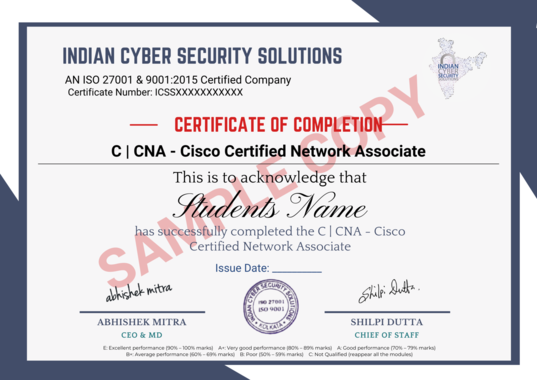
Current Job Openings
Check job profile, salary scale of current jobs available in market
Online CCNA Certification Training in Kolkata
We are confident enough to deal with ourselves together of the simplest CCNA training in India our Cybersecurity professionals will guide you with the simplest practical knowledge to be a successful Certified Computer Hacking Forensic Investigator. we offer classroom training at our Kolkata center and have a web training facility for outstation and international students.
Our training institute is found within the city of joy Kolkata famous for its food and IT industry located in Salt Lake. Indian Cyber Security Solutions is found in salt lake sector 2 Kolkata in between the IT hub Kolkata Sector V and Sector I surrounded by MNC’s like Wipro, cognizant, TCS. the certification is beneficial for joining in top MNCs as a neighborhood of their cybersecurity team.
But the present Situation are learning is far away from offline classes so we provide a reliable Online Courses where our mentor guide you throughout the process and one will never feel you are learning alone, by working on virtual group projects, constant mentoring from our team, online examinations, and evaluation procedure is equal to both offline and online students, so one shall not be worried about their skills and knowledge.
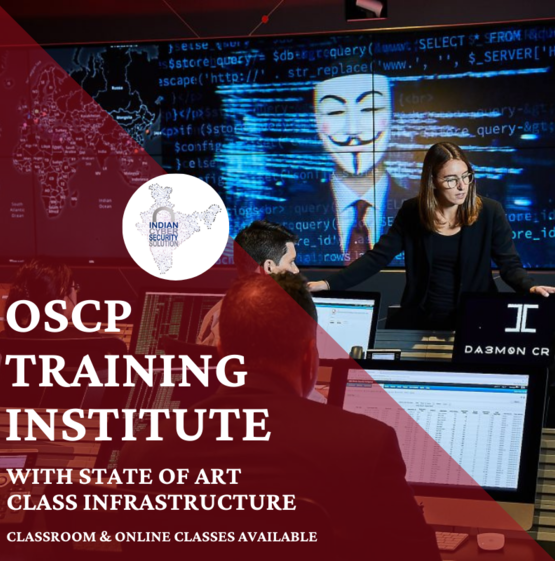
We are providing CCNA and other certification courses not just for the scholars who are from programming backgrounds but also for the scholars who are from different backgrounds by simply providing the fundamentals of Networking. we are one among the top-rated instituted which provides quality and standardized course certifications which are wont to apply even for overseas companies, as cybersecurity is very demanding to use any security-related jobs for MNC’s and also for state or defense-related companies and projects.
How you will be benefited from CCNA Course of ICSS?
Indian Cyber Security Solutions offers the best CCNA training as it is regarded as the best CCNA Training Institute in India. ICSS focuses on the in-depth knowledge of the learners through our experts. Therefore, you will able to improve your knowledge of risks and vulnerabilities. At first, you have to think like a hacker to learn ethical hacking. Best CCNA Training Institute in India delivers a 90% practical course by penetration testers who are themselves CEH certified and CCNA certified. Along with CCNA Training in India, we provide placement assistance to the students as we are the Best CCNA Training Institute in India. 20 + certified ethical hackers will be your trainer for 2 months. Apart from a certification exam conducted by EC- council at the end of the course we make sure you be well prepared at the Best CCNA Training Institute in India. Cybersecurity professionals will guide you with the best practical knowledge to be a successful CCNA certified professional.
Best CCNA Training in India with unlimited scopes in IT INDUSTRY
Indian Cyber Security Solutions brings best CCNA Training in India that will allow you to fully utilize its concepts and create code in your own way. More than 120+ students got placed after completion of the course in best MNC’s. Indian Cyber Security Solutions headquarter is located in India surrounded by reputed organizations like Wipro, IBM. As per US consul general, at Sector 5 of Salt Lake will witness surge of IT / ITES in future. New US based companies, that are present in other metropolitan cities of India. The Indian-US bilateral cooperation ranges from trade and investment, high-technology, cyber security, and there are various other sectors where foreign companies are welcome to invest. Major Real estate developer DLF has already developed an IT parks in several major cities of India.
Do you want to be a Campus Representative?
If you want to be a CR there is a long list of benefits that you will be entitled too.
























